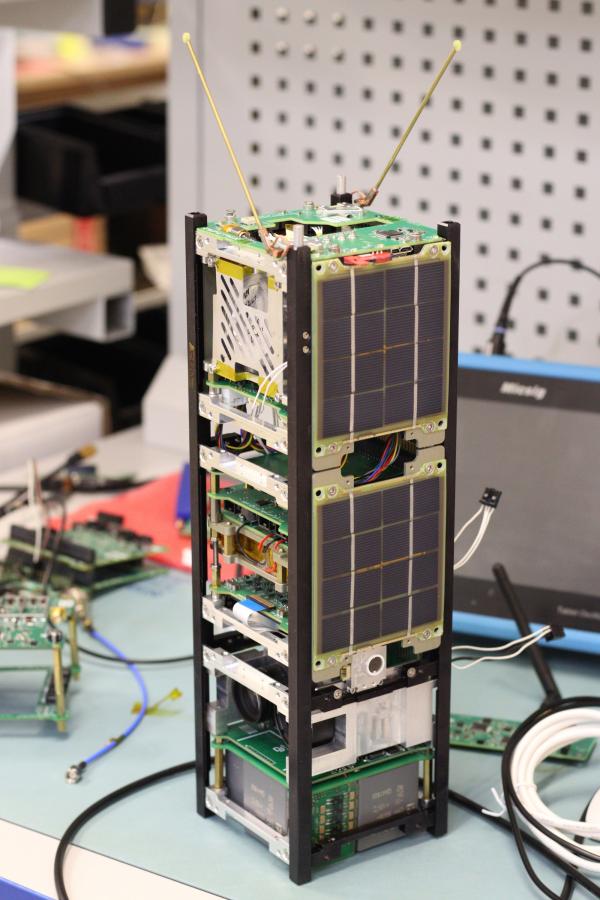The spacecraft assembled on the OrbiCraft-Pro platform of SPUTNIX (part of the Sitronics Group) will be launched into orbit in the first half of 2023. The payload for it was developed by students of the Institute for Laser and Plasma Technologies (LaPlas) of the MEPhI.

The Svyatobor-1 nanosatellite has been assembled and is ready for pre-launch tests, according to the private space company SPUTNIX. The spacecraft was made with the support of the Innovation Promotion Foundation as part of the Space-Pi project of the Planet Duty Program, a large-scale federal project aimed at attracting schoolchildren and students to the study of space technologies and their application in various fields.
The nanosatellite is designed to track forest fires and other natural disasters. The device was equipped with a thermal imaging camera, which will quickly detect fires and thermal anomalies on the Earth's surface, as well as a color camera in the visible range - it will be used to shoot fires and other objects with a resolution of 15-17 meters per pixel. In addition, the spacecraft has an updated VERA plasma engine, which was developed by MEPhI students. It will allow correcting and maintaining the satellite's orbit during its operation.
“The task was to integrate the MEPhI payload into our nanosatellite platform and prepare the satellite for launch. This device will quickly detect fires and other thermal anomalies on the Earth's surface. The functional content of the payload was handled by MEPhI undergraduate students. This is not the first project with the university, in August two spacecraft based on our platform with experimental plasma engines VERA went into orbit,” said Vladislav Ivanenko, General Director of SPUTNIX.
The nanosatellite platform OrbiCraft-Pro of the CubeSat format, which has proven itself in many space missions, is a unique development of the SPUTNIX company. It allows science teams to focus on developing payload devices and experiment planning instead of building a new spacecraft for each mission.
“A distinctive feature of the work of our university has always been the involvement of students in solving real, rather than purely educational problems,” said Igor Egorov, head of the laboratory of plasma rocket engines at the LaPlas Institute. - And cooperation with SPUTNIX demonstrates an excellent example of such an approach - we even involved schoolchildren in the development of a number of elements of the satellite's propulsion system. Now we are creating a control and data reception center on the territory of the university so that students, as well as schoolchildren from lyceums at MEPhI, can gain experience in controlling spacecraft, as well as experience in processing the data received from them. Svyatobor-1 will not be our last satellite: we have already started working on the design of the next spacecraft.”
The launch of the satellite into orbit is scheduled for the first half of 2023.





